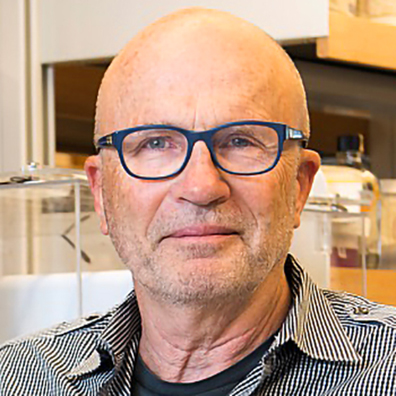
Clifford Woolf, MB, BCh, PhD
Blackfan Diamond Chair in Neuroscience Research; Director, F.M. Kirby Program in Neurobiology Center; Co-director, Gene Editing and Analysis Core, IDDRC, Boston Children’s Hospital; Professor of Neurology and Neurobiology, Harvard Medical School.
Novel charged sodium and calcium channel inhibitor active against neurogenic inflammation.
Lee S, Jo S, Talbot S, Zhang HB, Kotoda M, Andrews NA, Puopolo M, Liu PW, Jacquemont T, Pascal M, Heckman LM, Jain A, Lee J, Woolf CJ, Bean BP.
Elife. 2019 Nov 25;8:e48118. doi: 10.7554/eLife.48118. PMID: 31765298; PMCID: PMC6877086.
Diltiazem Promotes Regenerative Axon Growth.
Huebner EA, Budel S, Jiang Z, Omura T, Ho TS, Barrett L, Merkel JS, Pereira LM, Andrews NA, Wang X, Singh B, Kapur K, Costigan M, Strittmatter SM, Woolf CJ.
Mol Neurobiol 2019;56(6):3948-57. PMCID: PMC6424671
Neuronal-Specific TUBB3 Is Not Required for Normal Neuronal Function but Is Essential for Timely Axon Regeneration.
Latremoliere A, Cheng L, DeLisle M, Wu C, Chew S, Hutchinson EB, Sheridan A, Alexandre C, Latremoliere F, Sheu SH, Golidy S, Omura T, Huebner EA, Fan Y, Whitman MC, Nguyen E, Hermawan C, Pierpaoli C, Tischfield MA, Woolf CJ, Engle EC.
Cell Rep 2018;24(7):1865-79 e9. PMCID: PMC6155462
Purkinje cells derived from TSC patients display hypoexcitability and synaptic deficits associated with reduced FMRP levels and reversed by rapamycin.
Sundberg M, Tochitsky I, Buchholz DE, Winden K, Kujala V, Kapur K, Cataltepe D, Turner D, Han MJ, Woolf CJ, Hatten ME, Sahin M.
Mol Psychiatry 2018;23(11):2167-83. PMCID: PMC6093816

